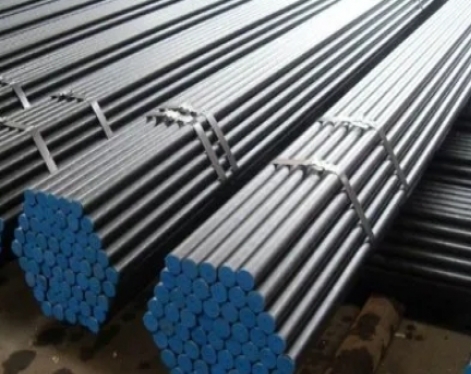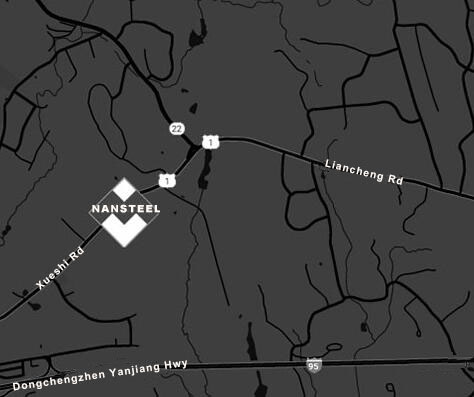Boiler tubes are a crucial component of boiler systems, and their energy-saving performance directly impacts the boiler's overall energy efficiency and operating costs. With rising energy prices and heightened environmental protection requirements, the energy-saving performance of boiler tubes has become a key factor in boiler design and selection. This article will explore the energy-saving performance of boiler tubes in detail, focusing on material selection, structural design, heat transfer efficiency, and maintenance management.
The impact of material selection on energy-saving performance
The material choice for boiler tubes has a direct impact on their energy-saving performance. High-quality materials not only extend the service life of boiler tubes but also effectively reduce energy consumption. Currently, commonly used boiler tube materials include carbon steel, alloy steel, and stainless steel.
Carbon steel: Carbon steel boiler tubes have good thermal conductivity and mechanical strength and are relatively cheap, but their corrosion resistance and high temperature resistance are poor. Long-term use can easily lead to corrosion and scaling problems, resulting in decreased heat transfer efficiency and increased energy consumption.
Alloy Steel: Alloy steel boiler tubes are enhanced with alloying elements (such as chromium, molybdenum, and nickel) to enhance their heat and corrosion resistance, making them suitable for high-temperature and high-pressure environments. Alloy steel boiler tubes offer a long service life, stable heat transfer efficiency, and can effectively reduce energy consumption.
Stainless steel: Stainless steel boiler tubes offer excellent corrosion and high-temperature resistance, making them particularly suitable for highly corrosive environments. They also offer high heat transfer efficiency and are less prone to scaling, significantly reducing energy consumption. However, they come at a higher cost.
Therefore, when selecting materials, appropriate materials should be selected according to the specific working environment and operating conditions of the boiler to balance energy-saving performance and economy.
Impact of structural design on energy-saving performance
The structural design of boiler tubes also has a significant impact on their energy-saving performance. Reasonable structural design can improve heat transfer efficiency, reduce heat loss, and thus reduce energy consumption.
Tube diameter and wall thickness: The diameter and wall thickness design of boiler tubes should be optimized according to the load and operating parameters of the boiler. A pipe diameter that is too small will increase fluid resistance and increase pump energy consumption; a pipe diameter that is too large will increase material costs and heat loss. Too thin a wall will affect the strength and safety of the boiler tube, while too thick a wall will increase thermal resistance and reduce heat transfer efficiency. Therefore, the proper selection of tube diameter and wall thickness is the key to improving the energy-saving performance of boiler tubes.
The layout of boiler tubes affects flue gas flow and heat transfer. A reasonable arrangement can reduce resistance and increase efficiency. Two common arrangements are sequential and staggered. Sequential tubes offer lower resistance but lower heat transfer efficiency, while staggered tubes offer higher heat transfer efficiency but higher resistance. The choice depends on the actual situation.
Finned tubes increase heat transfer area and efficiency by adding fins to the outside of the tubes. They are particularly suitable for situations where the heat transfer coefficient on the flue gas side is low, effectively reducing energy consumption. However, their design and manufacturing are complex and costly, requiring a balance between energy conservation and economic efficiency.

Impact of heat transfer efficiency on energy-saving performance
The heat transfer efficiency of boiler tubes is an important factor affecting their energy-saving performance. The higher the heat transfer efficiency, the higher the thermal energy utilization rate of the boiler and the lower the energy consumption. To improve the heat transfer efficiency of boiler tubes, we can start from the following aspects:
Reduce scaling: Boiler tubes are prone to scaling during operation, reducing heat transfer efficiency and increasing energy consumption. Regular cleaning and maintenance are necessary to reduce scaling. Choosing corrosion-resistant, non-scaling materials (such as stainless steel) can also help alleviate this problem.
Optimizing flue gas flow: Flue gas flow patterns affect heat transfer efficiency. Optimizing boiler tube structure design and layout can reduce resistance and increase efficiency. Properly controlling flue gas flow velocity (avoiding excessively high or low flow rates) can also help improve efficiency.
The flow rate of the fluid in the pipe affects the heat transfer efficiency: appropriately increasing the flow rate can enhance convective heat transfer and improve efficiency, but too high a flow rate will increase pump consumption, so both must be taken into consideration to select an appropriate flow rate.
Impact of maintenance management on energy-saving performance
Boiler tube maintenance has a long-term impact on its energy-saving performance. Good maintenance can keep the boiler tubes running efficiently, extend their service life, and reduce energy consumption.
Clean regularly: Regular cleaning of boiler tubes removes scale and deposits, maintaining heat transfer efficiency and reducing energy consumption. Cleaning methods include mechanical cleaning and chemical cleaning, depending on the actual situation.
Regular inspections: Regularly inspect boiler tubes to promptly detect and address problems such as corrosion and cracks, thereby avoiding increased energy consumption due to failures. Inspections include visual inspection, wall thickness measurement, and non-destructive testing.
Optimizing operating parameters: By optimizing boiler operating parameters such as combustion temperature, flue gas temperature, and fluid flow rate, the heat transfer efficiency of the boiler tubes can be improved and energy consumption can be reduced. In addition, properly controlling the boiler load and avoiding long periods of low-load operation can also help improve energy-saving performance.
Conclusion
The energy-saving performance of boiler tubes is influenced by multiple factors, including material selection, structural design, heat transfer efficiency, and maintenance management. By selecting high-quality materials, optimizing structural design, improving heat transfer efficiency, and strengthening maintenance management, the energy-saving performance of boiler tubes can be significantly improved, reducing energy consumption and operating costs. With continuous technological advancements, the energy-saving performance of boiler tubes will be further enhanced, providing more efficient and environmentally friendly solutions for industrial production and residential heating.
Read more: The Causes of Boiler Tube Rupture
The impact of material selection on energy-saving performance
The material choice for boiler tubes has a direct impact on their energy-saving performance. High-quality materials not only extend the service life of boiler tubes but also effectively reduce energy consumption. Currently, commonly used boiler tube materials include carbon steel, alloy steel, and stainless steel.
Carbon steel: Carbon steel boiler tubes have good thermal conductivity and mechanical strength and are relatively cheap, but their corrosion resistance and high temperature resistance are poor. Long-term use can easily lead to corrosion and scaling problems, resulting in decreased heat transfer efficiency and increased energy consumption.
Alloy Steel: Alloy steel boiler tubes are enhanced with alloying elements (such as chromium, molybdenum, and nickel) to enhance their heat and corrosion resistance, making them suitable for high-temperature and high-pressure environments. Alloy steel boiler tubes offer a long service life, stable heat transfer efficiency, and can effectively reduce energy consumption.
Stainless steel: Stainless steel boiler tubes offer excellent corrosion and high-temperature resistance, making them particularly suitable for highly corrosive environments. They also offer high heat transfer efficiency and are less prone to scaling, significantly reducing energy consumption. However, they come at a higher cost.
Therefore, when selecting materials, appropriate materials should be selected according to the specific working environment and operating conditions of the boiler to balance energy-saving performance and economy.
Impact of structural design on energy-saving performance
The structural design of boiler tubes also has a significant impact on their energy-saving performance. Reasonable structural design can improve heat transfer efficiency, reduce heat loss, and thus reduce energy consumption.
Tube diameter and wall thickness: The diameter and wall thickness design of boiler tubes should be optimized according to the load and operating parameters of the boiler. A pipe diameter that is too small will increase fluid resistance and increase pump energy consumption; a pipe diameter that is too large will increase material costs and heat loss. Too thin a wall will affect the strength and safety of the boiler tube, while too thick a wall will increase thermal resistance and reduce heat transfer efficiency. Therefore, the proper selection of tube diameter and wall thickness is the key to improving the energy-saving performance of boiler tubes.
The layout of boiler tubes affects flue gas flow and heat transfer. A reasonable arrangement can reduce resistance and increase efficiency. Two common arrangements are sequential and staggered. Sequential tubes offer lower resistance but lower heat transfer efficiency, while staggered tubes offer higher heat transfer efficiency but higher resistance. The choice depends on the actual situation.
Finned tubes increase heat transfer area and efficiency by adding fins to the outside of the tubes. They are particularly suitable for situations where the heat transfer coefficient on the flue gas side is low, effectively reducing energy consumption. However, their design and manufacturing are complex and costly, requiring a balance between energy conservation and economic efficiency.

Impact of heat transfer efficiency on energy-saving performance
The heat transfer efficiency of boiler tubes is an important factor affecting their energy-saving performance. The higher the heat transfer efficiency, the higher the thermal energy utilization rate of the boiler and the lower the energy consumption. To improve the heat transfer efficiency of boiler tubes, we can start from the following aspects:
Reduce scaling: Boiler tubes are prone to scaling during operation, reducing heat transfer efficiency and increasing energy consumption. Regular cleaning and maintenance are necessary to reduce scaling. Choosing corrosion-resistant, non-scaling materials (such as stainless steel) can also help alleviate this problem.
Optimizing flue gas flow: Flue gas flow patterns affect heat transfer efficiency. Optimizing boiler tube structure design and layout can reduce resistance and increase efficiency. Properly controlling flue gas flow velocity (avoiding excessively high or low flow rates) can also help improve efficiency.
The flow rate of the fluid in the pipe affects the heat transfer efficiency: appropriately increasing the flow rate can enhance convective heat transfer and improve efficiency, but too high a flow rate will increase pump consumption, so both must be taken into consideration to select an appropriate flow rate.
Impact of maintenance management on energy-saving performance
Boiler tube maintenance has a long-term impact on its energy-saving performance. Good maintenance can keep the boiler tubes running efficiently, extend their service life, and reduce energy consumption.
Clean regularly: Regular cleaning of boiler tubes removes scale and deposits, maintaining heat transfer efficiency and reducing energy consumption. Cleaning methods include mechanical cleaning and chemical cleaning, depending on the actual situation.
Regular inspections: Regularly inspect boiler tubes to promptly detect and address problems such as corrosion and cracks, thereby avoiding increased energy consumption due to failures. Inspections include visual inspection, wall thickness measurement, and non-destructive testing.
Optimizing operating parameters: By optimizing boiler operating parameters such as combustion temperature, flue gas temperature, and fluid flow rate, the heat transfer efficiency of the boiler tubes can be improved and energy consumption can be reduced. In addition, properly controlling the boiler load and avoiding long periods of low-load operation can also help improve energy-saving performance.
Conclusion
The energy-saving performance of boiler tubes is influenced by multiple factors, including material selection, structural design, heat transfer efficiency, and maintenance management. By selecting high-quality materials, optimizing structural design, improving heat transfer efficiency, and strengthening maintenance management, the energy-saving performance of boiler tubes can be significantly improved, reducing energy consumption and operating costs. With continuous technological advancements, the energy-saving performance of boiler tubes will be further enhanced, providing more efficient and environmentally friendly solutions for industrial production and residential heating.
Read more: The Causes of Boiler Tube Rupture









